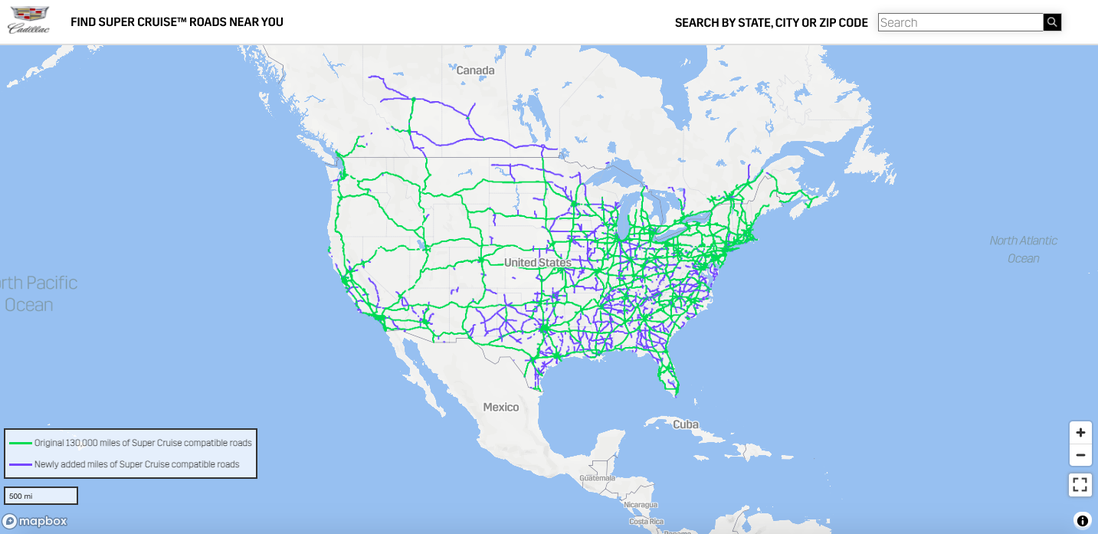Disappointed Tesla fans have spent the week waiting for an updated version of the electric car’s advanced driver assistance system, Autopilot.
Called “Full Self-Driving,” or FSD, it’s been available to a small, select group of Tesla owners since October, but CEO Elon Musk promised widespread access starting last week. Then he pushed out the wider release a few more days, and now it’s the weekend and Tesla drivers are still waiting. The latest news from Musk: FSD access is expected next month.
Even if Tesla drivers don’t have access to a more adept version of Autopilot that can autosteer, stop at stop signs, and accelerate on smaller city streets, the original automated assistance system is still available for anyone who bought the extra feature. While Tesla has offered Autopilot since 2014, competitors have cropped up, like General Motors’ Super Cruise hands-free driver assistance feature in 2017.
Last year General Motors rolled out an updated version of Super Cruise, now available on the newest Cadillac Escalade. The “enhanced” Super Cruise will also be an option on the upcoming Chevy Bolt EUV this summer.
Both Super Cruise and Autopilot don’t claim to be autonomous driving since you have to still pay attention and be ready to take over, but there are many similar automated driving features available.
Let’s look at what makes the two systems different.
Hands or no hands?
Tesla’s Autopilot gives you 30 seconds with hands off the wheel before it starts visibly, and then audibly, warning you to take hold of the wheel. Once FSD arrives, the automated driving won’t require constant contact. Here’s a FSD ride with the driver’s hands on his lap:
[embedded content]
Super Cruise, on the other hand, was designed to be used as a hands-free experience. A driver attention camera on the steering wheel notices if you look away for too long, stare down at your cellphone, or close your eyes. It works even if you’re wearing sunglasses.
If you stop paying attention the system will alert you with a flashing green light on the steering wheel. Eventually it turns red before a voice alert commands you to take over steering.
Where does it work?
Autopilot works best on the highway, but it can be enabled on any major thoroughfare. FSD will add city driving and work on smaller streets.
Super Cruise is a freeway-only tool. It’s only available along 200,000 miles of roads in the U.S. and Canada.

Where you can Super Cruise.
What makes it work?
Tesla’s Autopilot relies on a lot of cameras, eight of them to be exact. There’s also 12 ultrasonic sensors and a forward-facing radar.
For Super Cruise, there’s the infrared camera inside the car to make sure the driver isn’t distracted, but there are also cameras and sensors placed around the car. The car knows details about the road from LiDAR mapping.
[embedded content]
How to turn it on?
In Teslas, just push down twice on the right gear stalk to activate Autopilot. Then a symbol will appear on the screen denoting that the feature is engaged.
For Super Cruise, there’s a button on the bottom left side of the steering wheel. A symbol also appears on the screen, along with the illuminated steering wheel light bar. Once the wheel is solid green you can let go.

Image: general Motors
So what does it do?
On Autopilot, the car drives you forward and keeps up with the pace of surrounding traffic. Autosteering keeps the car in the lane.
Like the name suggests, Super Cruise automatically accelerates to keep up with your set speed. It also steers for you to keep you in the lane. You can use Super Cruise without auto-steering and it will keep the car driving at a certain pace, but you have to keep your hands on the wheel. For that mode the steering wheel turns blue.
What else can it do?
FSD mode adds onto Autopilot’s autosteering and automatic cruise control. With FSD, the biggest upgrade is called “Navigate on Autopilot” that will automatically change lanes if you’re behind a slower driver and move you over to exit the freeway.
There’s also self-parking, stop sign and traffic signal recognition, and access to Autopilot on smaller city streets. But again, this is only available with FSD.
Super Cruise’s enhanced version can automatically change lanes. When you turn on your blinker, the car will assess the situation and once it decides it’s safe it’ll get over. You then turn the turn signal off and carry on.

What do celebrities think?
Actor Jamie Foxx took a Tesla out for a drive last year and was frustrated that he couldn’t keep his hands off the wheel when using Autopilot. Catch the Autopilot moment around the 8:40-minute mark:
[embedded content]
This week GM gave the Jonas Brothers (well, two of them), Tiffany Haddish, Sofia Vergara, Joe Manganiello and tWitch and Allison Boss a chance to try Super Cruise. Most of the excitement came from the hands-free experience. One celeb tester even ate a cookie while the car drove along.
[embedded content]
So, how much is all this?
Currently all Teslas now come with basic Autopilot features. But if you want access to the full automated package with FSD, that’s $10,000 extra. (And unless you’re part of the lucky beta testing group, you still have to wait until it’s actually available.) There’s also a subscription plan in the works if you don’t want lifelong FSD access.
GM is offering Super Cruise for free for the first three years, then it’ll be $25 per month.
